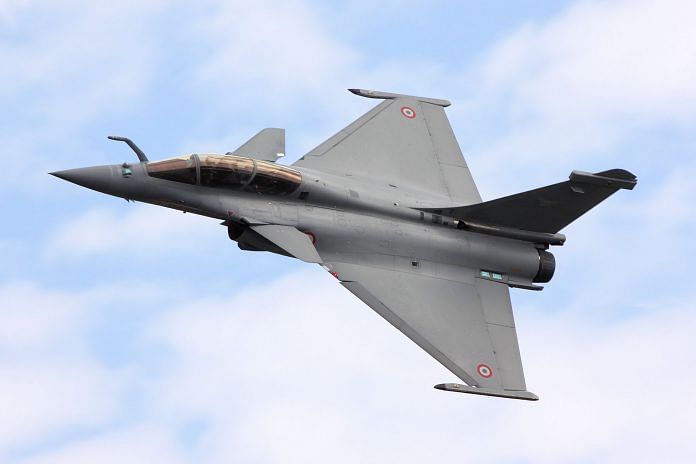A closer look at the history of events behind the current Rafale defence-deal controversy
The Indian government’s deal to purchase 36 Rafale fighter jets, first announced during a 2015 state visit to France, is now in the headlines thanks to allegations of overpricing and crony capitalism.
The controversy began with the selection of the Rafale fighter jets by the Congress government in 2012 to meet the IAF’s requirement for 123 combat aircraft. As the deal hit a deadlock, the Modi government scrapped the process to purchase 36 Rafale fighters. Now, the Congress has raised questions on the cost of each jet and alleged that industrialist Anil Ambani was unduly favoured in the deal.
ThePrint looks closely at the series of events in the now controversial defence deal:
1996: India’s last fighter jet deal
In one of the costliest defence deals, India signs a deal with Russia for Russian Su-30 MKI fighter jets to be procured in five batches. The deal costs India approximately 1.46 billion USD. The Sukhois are the last fighter jets to be bought by India till date.
2001: India’s jet fails to inspire hope
On 4 January 2001, the indigenous Light Combat Aircraft ‘Tejas’ completes its first flight, but it’s clear that the project is nowhere near completion. (The jet is finally inducted in the air force only in 2016). Meanwhile, the ageing MiG 21 fleet’s shelf life is drawing closer and the IAF begins its search for a new multi-role fighter.
2007: Two jets make the cut
Tenders for 126 Medium Multi Role Combat Aircraft (MMRCA) fighters are issued by India in 2007. The competition is between the French Rafale, Russia’s MIG-35, the Swedish Saab JAS-39 Gripen, American Lockheed Martin’s F-16, the Boeing F/A-18 Super Hornet and Eurofighter Typhoon.
Only the Rafale and Typhoon make the cut.
2012: A winner emerges
Five years after the tenders were issued, Dassault emerges as lowest bidder. Of the 126 jets required, 18 fighters are to be imported “in a fly-away condition”(i.e. having readied completion). Hindustan Aeronautics Ltd (HAL) will manufacture the remaining 108 jets with technological assistance from Dassault.
However, India and France are unable to decide on a price for the jets.
2014: The deal stalls
The workshare agreement between HAL and Dassault Aviation is signed on 13 March, 2014. But with the BJP-led NDA government coming to power, clarity on the progress of the deal remains unclear.
New Defence Minister Arun Jaitley says that a ‘considered decision’ will be taken. Dassault’s competitor Eurofighter Typhoon makes a last ditch attempt by offering a 20 per cent cut in price.
2015: A new deal is signed
Narendra Modi visits Paris in April 2015, and India announces its decision to buy 36 Rafale fighters via a government-to-government deal.
Defence Minister Manohar Parrikar says the previous 126 fighter jet deal is dead, and now 36 fighters will be bought after negotiations.
2016: The deal is sealed
French President François Hollande visits India in January, a memorandum of understanding on the purchase of Rafale jets is signed for $7.8 billion.
2017: Congress claims to smells a rat
Alleging a “huge scam is brewing”, the Congress and media reports raise doubts about the deal. The main claims that have since emerged are:
-
The PM announcing the purchase of 36 jets without the defence minister’s presence and an inter-governmental agreement, is stated as being against Defence Procurement Procedure
-
The UPA government inked its deal worth $10.2 billion with a transfer of technology agreement but critics argue the new Rafale aircraft is now worth $8.7 billion. It is claimed the 126 Rafale jets would have cost $30.45 billion (without transfer of technology) as per the price arrived at by the Modi government.
-
Since Dassault is no longer obliged to share technology with HAL, and Reliance Defence Ltd has emerged as a key alliance player, the Congress alleges it is a move to “promote the interests of one industrial group”.



